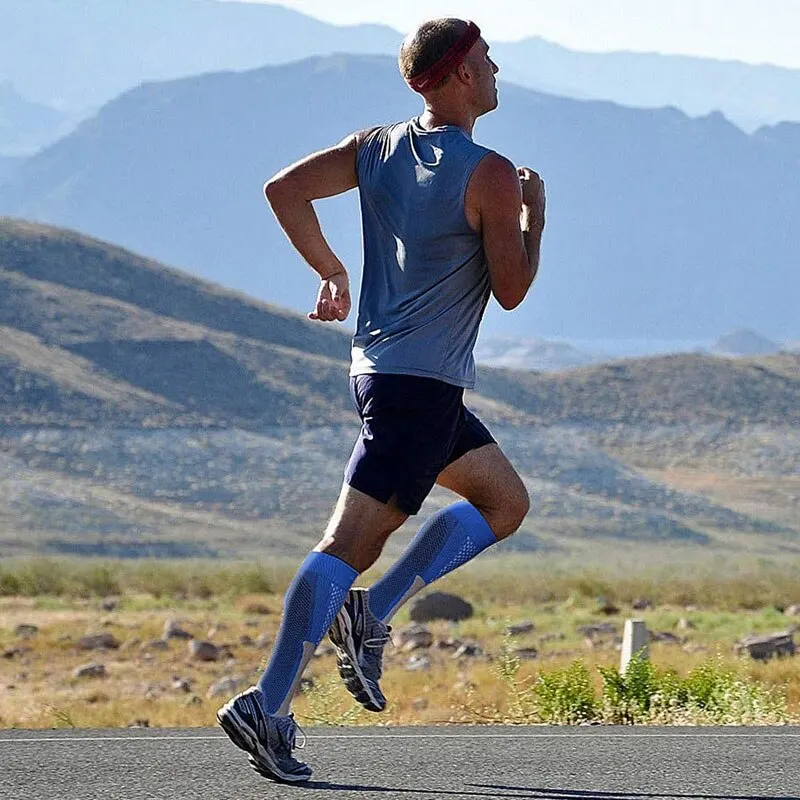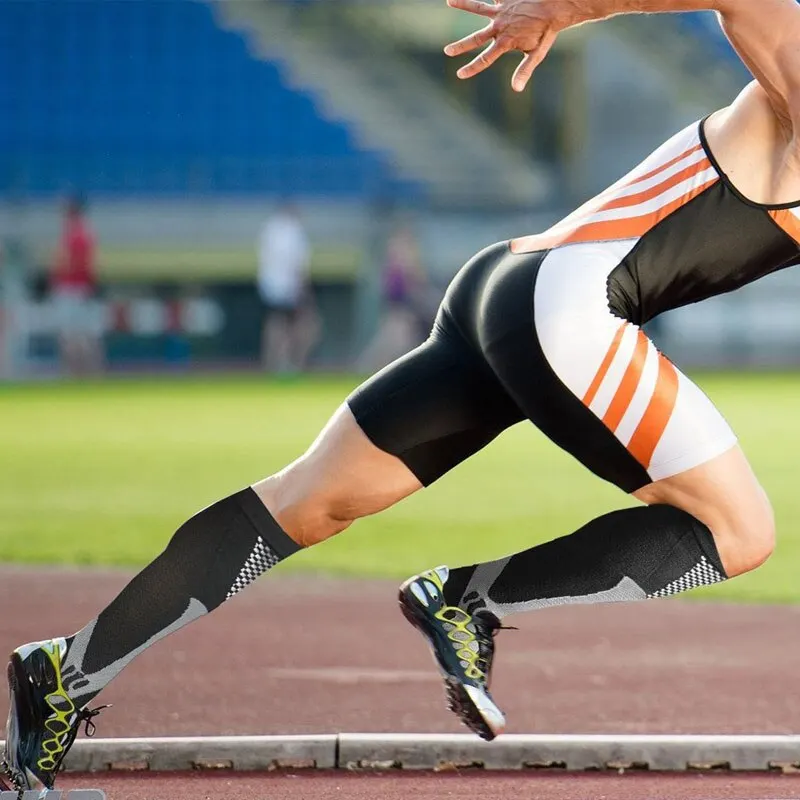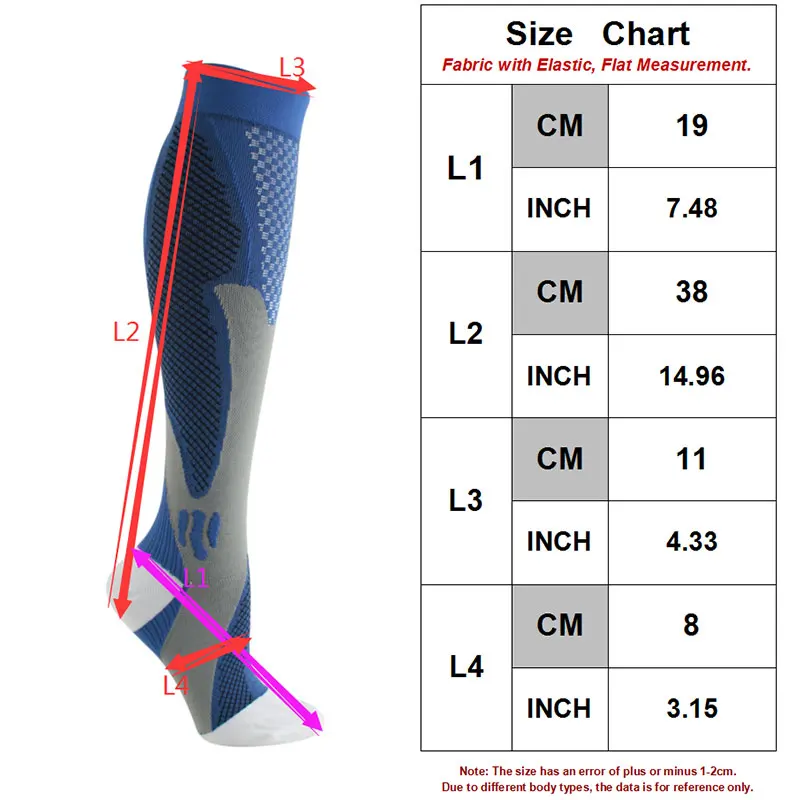The Ultimate Guide to Compression Socks: Benefits, Uses, and How to Choose the Right Pair Introduction: A Step Toward Better Health

Step into Comfort: The Transformative Power of Compression Socks. Imagine a simple solution that not only supports your legs but also revitalizes your entire day. Whether you’re on your feet from dawn to dusk, traveling across time zones, or managing a health condition, compression socks offer a remarkable way to improve circulation, reduce swelling, and enhance your overall well-being.
These specially designed socks are more than just a functional accessory; they are a testament to the fusion of science and comfort. From athletes chasing peak performance to professionals enduring long hours, and even individuals recovering from medical challenges, compression socks cater to diverse needs with their innovative approach to leg health.
This guide delves into the world of compression socks, exploring their benefits, the science behind their effectiveness, and how they can transform your everyday life. Step into a journey of comfort and discover how these humble socks can make a profound difference, one step at a time.
Compression socks have become an essential accessory for individuals seeking better circulation, comfort, and support. Whether you’re an athlete, a frequent traveler, or someone managing a medical condition, compression socks offer a simple yet effective solution to enhance leg health.
Designed with special materials and varying levels of pressure, these socks improve blood flow, reduce swelling, and prevent discomfort caused by extended periods of inactivity or physical exertion. In this comprehensive guide, we’ll explore the benefits of compression socks, who should use them, and how to select the perfect pair for your needs.
What Are Compression Socks?
Compression socks are specialized hosiery designed to apply gentle pressure to your legs, promoting better blood circulation. The compression is typically strongest at the ankle and gradually decreases as it moves up the leg. This gradient pressure encourages blood flow back to the heart, reducing swelling and alleviating discomfort.
The Science Behind Compression Socks
The key principle of compression socks lies in their ability to counteract gravity. When you stand or sit for long periods, blood can pool in your lower legs and feet, causing swelling and discomfort. Compression socks work by squeezing the leg tissues and walls of the veins, helping the blood flow more efficiently.
Benefits of Compression Socks
1. Improved Circulation
Compression socks support blood flow, preventing pooling and helping oxygen-rich blood reach your muscles and tissues.
2. Reduced Swelling
For individuals prone to edema or swelling, compression socks provide relief by preventing fluid buildup in the lower extremities.
3. Prevention of Blood Clots
Wearing compression socks lowers the risk of deep vein thrombosis (DVT), especially during long flights or hospital stays.
4. Enhanced Athletic Performance
Athletes use compression socks to reduce muscle fatigue, speed up recovery, and improve endurance.
5. Pain Relief
People with conditions like varicose veins or plantar fasciitis find compression socks alleviate discomfort and provide much-needed support.
Who Should Use Compression Socks?
Compression socks benefit a wide range of individuals, including:
- Athletes: Enhance recovery and reduce muscle soreness.
- Travelers: Prevent swelling and DVT during long flights.
- Pregnant Women: Relieve swelling and leg discomfort.
- Medical Patients: Support treatment for varicose veins, lymphedema, and more.
- Professionals: Nurses, teachers, and others who stand or sit for extended periods.
Types of Compression Socks
1. Graduated Compression Socks
- Pressure decreases from the ankle to the knee or thigh.
- Ideal for medical purposes and improving circulation.
2. Anti-Embolism Socks
- Designed for individuals recovering from surgery or immobilization.
- Prevent blood clots and improve circulation.
3. Athletic Compression Socks
- Provide mild compression to enhance performance and recovery.
- Often made from breathable, moisture-wicking materials.
Compression Levels Explained
Compression socks come in various pressure levels, measured in millimeters of mercury (mmHg):
- Mild (8-15 mmHg): For mild swelling and fatigue.
- Moderate (15-20 mmHg): Common for everyday use and travel.
- Firm (20-30 mmHg): Recommended for varicose veins and post-surgery care.
- Extra Firm (30-40 mmHg): For severe conditions, often prescribed by a doctor.

How to Choose the Right Compression Socks
- Assess Your Needs: Determine whether you’re using them for medical, athletic, or daily purposes.
- Get the Right Fit: Measure your calf and ankle to ensure a snug fit without excessive tightness.
- Consider Material: Look for breathable fabrics like nylon and spandex for all-day comfort.
- Pick the Right Length: Choose knee-high, thigh-high, or full-length based on your coverage needs.
- Consult a Professional: If you’re unsure about the compression level, seek advice from a healthcare provider.
When and How to Wear Compression Socks
- Daily Use: Put them on in the morning and wear them throughout the day.
- Travel: Wear them during flights or long car rides.
- Exercise: Use them during workouts or recovery periods.
Caring for Your Compression Socks
- Wash them regularly with mild detergent to maintain elasticity.
- Avoid wringing them out; instead, air dry or use a delicate dryer setting.
- Replace them every 4-6 months for optimal performance.






















































































































































